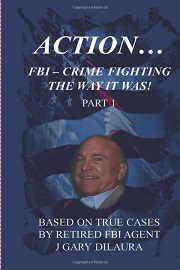
Examination of a Witch (1853) by T. H. Matteson, a painting said to be inspired by the Salem witch trials.
Just a couple of days old, the tale of the 81 year old pharmacist Robert Kenzia being arrested for allegedly requesting a woman to disrobe before he would fill her prescription, is circulating as any story laced with overtones of sex and drugs likely would. The United States Drug Enforcement Agency (DEA) is also auditing the pharmacy to see if they can find any other signs of wrongdoing.
Shock seems to be the initial reaction, based in part by the age of the accused. Those who actually know the man also feel confusion, as the accusation is not characteristic of the man they’re familiar with. While the Niagara Falls Police Department suspect there are other victims, seemingly none have made themselves known prior to the actual arrest.
What is truly mystifying about this case is not so much what is known, but what is not known.
If the allegations are true, then Mr. Kenzia has much to answer for, and the answers may come after he has his day in court. However, if the allegations are not true, or there is more to this story than has been publicly revealed so far, Mr. Kenzia may become a victim of this tragic tale, with little or no means to regain what he has lost.
In a culture that has been accustomed to “rush to judgment”, an accused may find himself not only guilty before being proven innocent, he may likely be tainted afterwards, even if the charges are dropped.
Before these charges hit the news, Mr. Kenzia had a clean reputation and was respected in the community. If other victims come forward, or the investigations reveal other illegal activity flowing from his pharmacy, then the public has learned something valuable and new. But if the story runs another way, and the accusations fall flat, how quickly will the public grasp the narrative of Mr. Kenzia’s innocence?
As a society, we have a responsibility to protect victims of crimes. That is without doubt. But should we not also have a responsibility to protect the accused, particularly prior to a final adjudication of guilt? The lofty principle of “innocent until proven guilty” becomes somewhat meaningless when you’re left standing in the smear that was once your life after your name and reputation have been dragged through the public mud.
It bears remembering, there are two sides to every story. In the still-evolving tale of Mr. Kenzia, one may still ask, just how much do we really know?




















